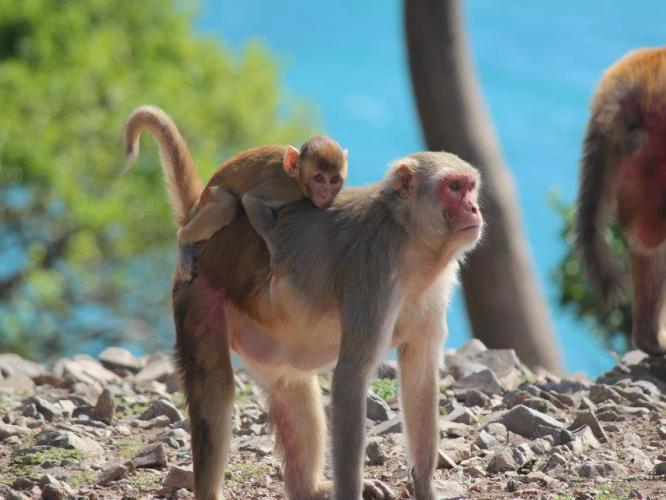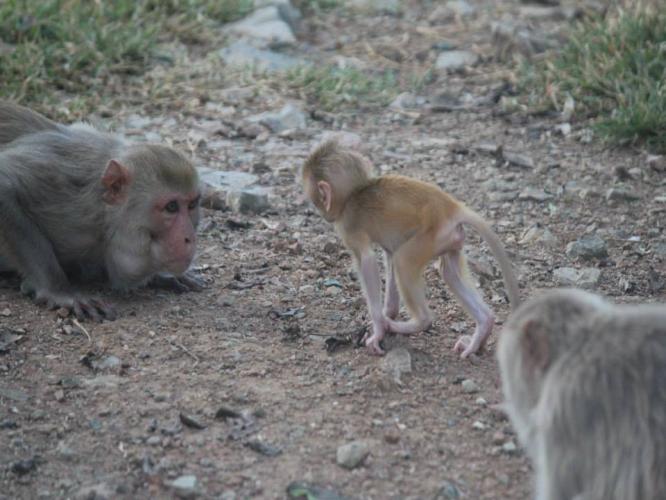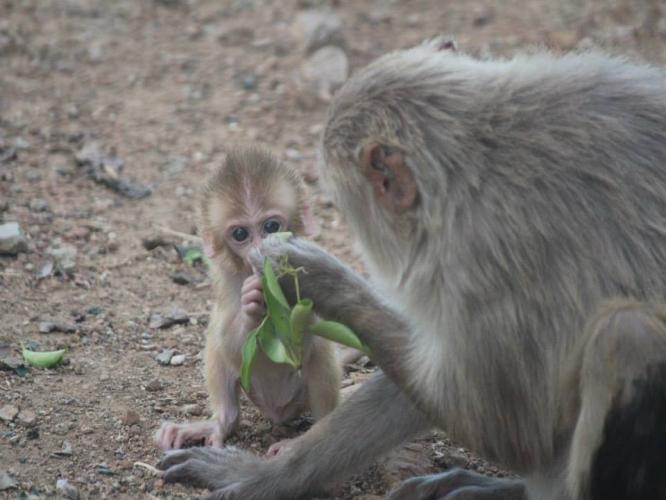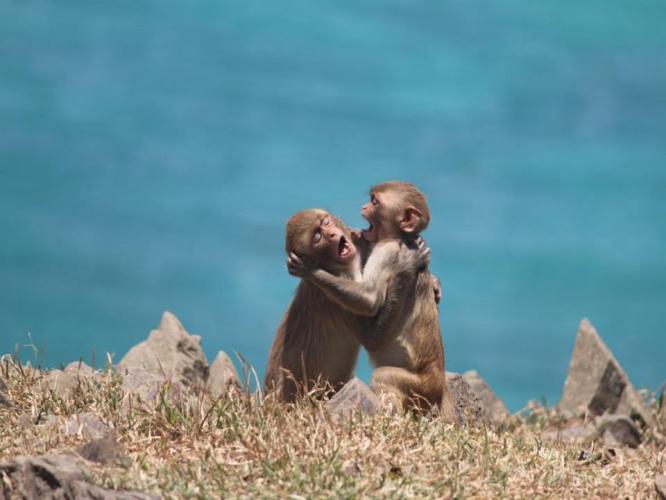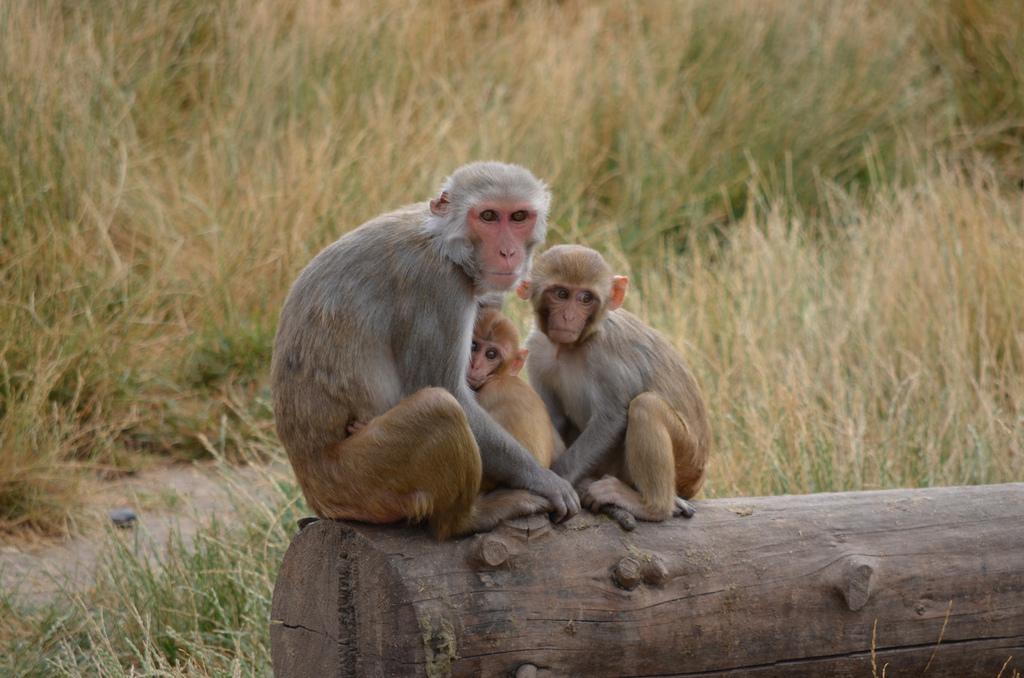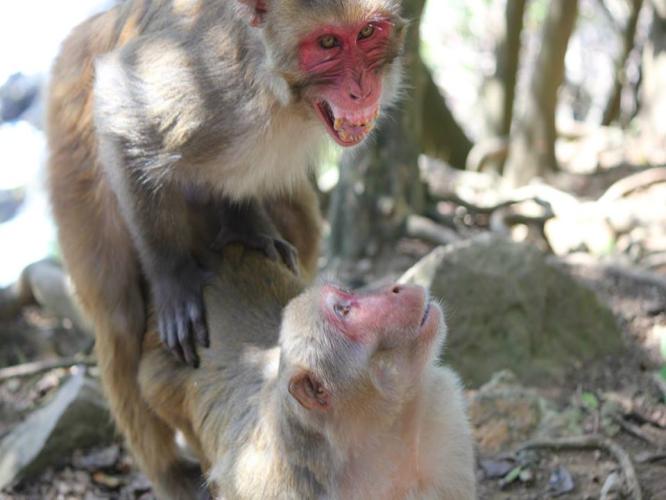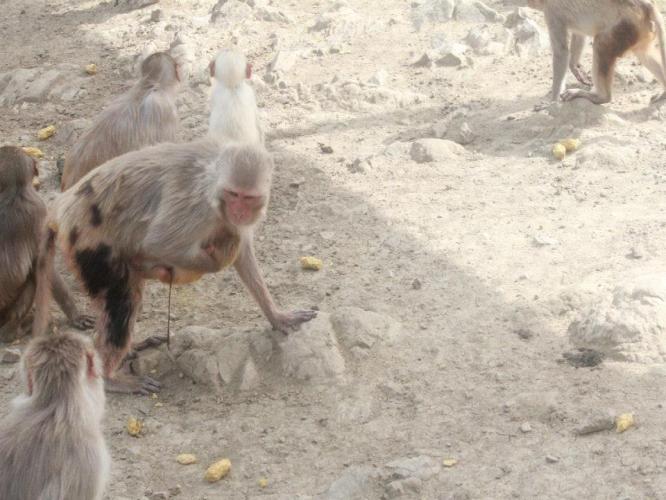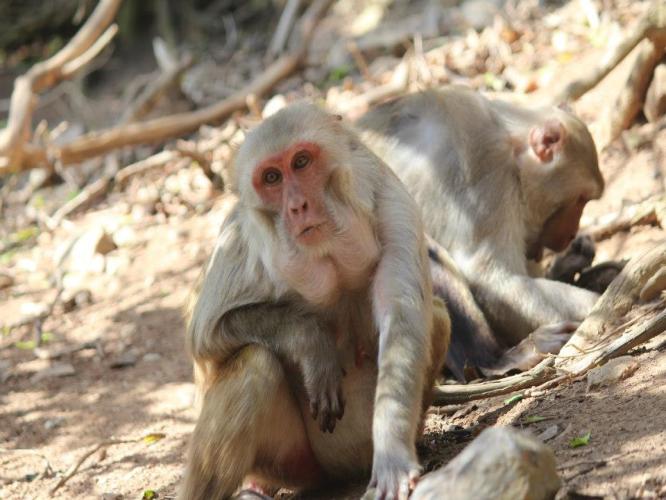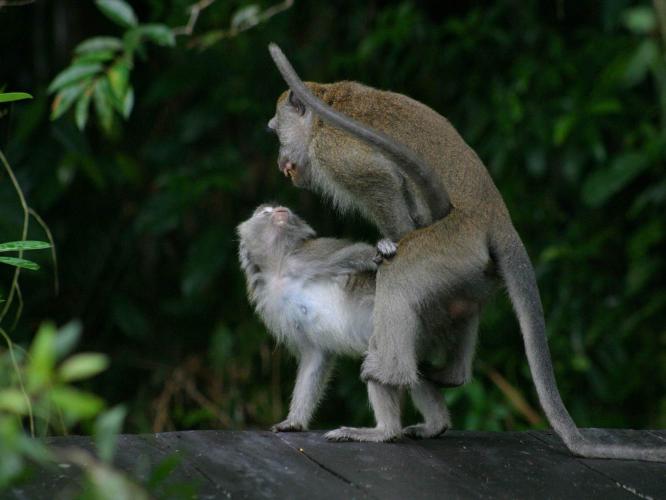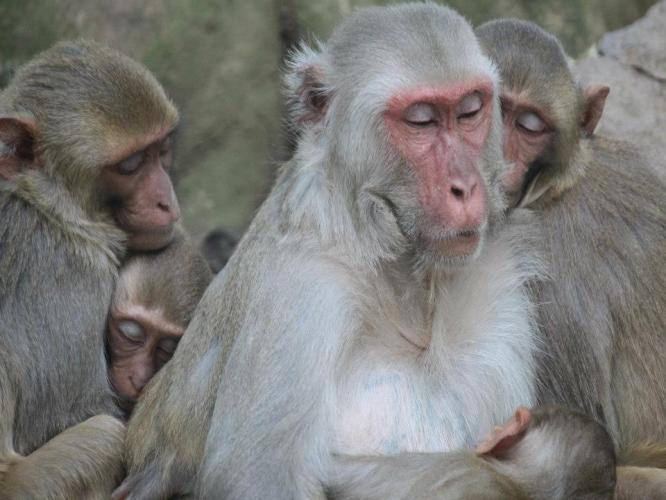The different life stages of the macaque, from prenatal development through to adulthood and senescence.
References
-
Wolfensohn S and Honess P (2005). Handbook of primate husbandry and welfare,1st edition. Wiley-Blackwell.
-
Bauman MD et al. (2014). Activation of the maternal immune system during pregnancy alters behavioral development of rhesus monkey offspring. Biological Psychiatry 75(4): 332-41. https://doi.org/10.1016/j.biopsych.2013.06.025
-
Fooden J (2000). Systematic review of the rhesus macaque, macaca mulatta (zimmermann, 1780) / jack fooden 1 ed. Field Museum of Natural History. https://doi.org/10.5962/bhl.title.7192
-
Van Schaik CP and Van Noordwijk MA (1988). Scramble and contest in feeding competition among female long-tailed macaques (macaca fascicularis). Behaviour 105(1): 77-98.
-
Nowak RM (1999). Walker's primates of the world I and II ed., Vol. 6. John Hopkins University Press.
-
Ong P and Richardson M (2008). Macaca fascicularis. In the IUCN Red List of Threatened Species. Version 2015.2.
-
Maestripieri D and Hoffman CL (2012). Behavior and social dynamics of rhesus macaques on cayo santiago. In: Bones, genetics, and behavior of rhesus macaques: Macaca mulatta of cayo santiago and beyond ((pp. 247-62). Springer New York. https://doi.org/10.1007/978-1-4614-1046-1_12
-
Hinde K (2009). Richer milk for sons but more milk for daughters: Sex-biased investment during lactation varies with maternal life history in rhesus macaques. American Journal of Human Biology 21(4): 512-9. https://doi.org/10.1002/ajhb.20917
-
Hinde K (2007). First-time macaque mothers bias milk composition in favor of sons. Current Biology 17(22): R958-R9. https://doi.org/10.1016/j.cub.2007.09.029
-
Semple S et al. (2009). Bystanders affect the outcome of mother–infant interactions in rhesus macaques. Proceedings of the Royal Society B: Biological Sciences 276(1665): 2257-62. https://doi.org/10.1098/rspb.2009.0103
-
Bowman JE and Lee PC (1995). Growth and threshold weaning weights among captive rhesus macaques. American Journal of Physical Anthropology 96(2): 159-75. https://doi.org/10.1002/ajpa.1330960205
-
Prescott MJ et al. (2012). Laboratory macaques: When to wean? Applied Animal Behaviour Science 137(3-4): 194-207. https://doi.org/10.1016/j.applanim.2011.11.001
-
Boyce WT and Ellis BJ (2005). Biological sensitivity to context: I. An evolutionary–developmental theory of the origins and functions of stress reactivity. Development and Psychopathology 17(02). https://doi.org/10.1017/S0954579405050145
-
Capitanio JP et al. (2005). Rearing environment and hypothalamic-pituitary-adrenal regulation in young rhesus monkeys (macaca mulatta). Developmental Psychobiology 46(4): 318-30. https://doi.org/10.1002/dev.20067
-
Champoux M et al. (1989). Hormonal effects of early rearing conditions in the infant rhesus monkey. American Journal of Primatology 19(2): 111-7. https://doi.org/10.1002/ajp.1350190204
-
Champoux M et al. (2002). Serotonin transporter gene polymorphism, differential early rearing, and behavior in rhesus monkey neonates. Molecular Psychiatry 7(10): 1058-63. https://doi.org/10.1038/sj.mp.4001157
-
Kinnally EL et al. (2008). Effects of early experience and genotype on serotonin transporter regulation in infant rhesus macaques. Genes, Brain and Behavior 7(4): 481-6. https://doi.org/10.1111/j.1601-183X.2007.00383.x
-
Rawashdeh O and Dubocovich ML (2014). Long-term effects of maternal separation on the responsiveness of the circadian system to melatonin in the diurnal non-human primate (macaca mulatta). Journal of Pineal Research 56(3): 254-63. https://doi.org/10.1111/jpi.12118
-
Rawlins RG and Kessler MJ (1986). The cayo santiago macaques history, behavior, and biology, 1st edition. State University of New York Press.
-
de Jong G et al. (1994). Genetic structure of a population with social structure and migration. In: Conservation genetics (Eds. Loeschcke V, Tomiuk J, and Jain SK) (1st edition., pp. 147-64).
-
Catchpole HR and van Wagenen G (1975). Reproduction in the rhesus monkey, macaca mulatta. In: The rhesus monkey: Volume ii: Management, reproduction, and pathology (Ed., Bourne GH) (pp. 117-41). Academic Press.
-
Dixson AF and Nevison CM (1997). The socioendocrinology of adolescent development in male rhesus monkeys (macaca mulatta). Hormones and Behavior 31(2): 126-35. https://doi.org/10.1006/hbeh.1997.1374
-
Nawar MM and Hafzz ESE (1972). The reproductive cycle of the crab-eating macaque (macaca fascicularis). Primates 13: 43-56.
-
Yoshida T et al. (1982). Menstrual Cycle Lengths and the Estimated Time of Ovulation in the Cynomolgus Monkey (Macaca fascicularis). Experimental Animals 31(3): 165-174. https://doi.org/10.1538/expanim1978.31.3_165
-
Dixson AF and Nevison CM (1997). The socioendocrinology of adolescent development in male rhesus monkeys (macaca mulatta). Hormones and Behavior 31(2): 126-35. https://doi.org/10.1006/hbeh.1997.1374
-
Lindburg DG (1971). The rhesus monkey in north india : An ecological and behavioral study. In: Primate behavior: Developments in field and laboratory research (Ed., Rosenblum LA) (Vol. 2, pp. 1-106). Academic Pr.
-
Wenyuan Q et al. (1993). Rhesus monkeys (macaca mulatta) in the taihang mountains, jiyuan county, henan, china. International Journal of Primatology 14(4).
-
Chapais B (1986). Why do adult male and female rhesus monkeys affiliate during the birth season. In: The cayo santiago macaques: History, behavior, and biology (Eds. Rawlins RG and Kessler MJ) (pp. 172-200). State University of New York Press.
-
Van Schaik CP and Van Noordwijk MA (1988). Scramble and contest in feeding competition among female long-tailed macaques (macaca fascicularis). Behaviour 105(1): 77-98.
-
Engelhardt A et al. (2004). Assessment of female reproductive status by male longtailed macaques, macaca fascicularis, under natural conditions. Animal Behaviour 67(5): 915-24.
-
Du Y et al. (2010). Seasonal Changes in the Reproductive Physiology of Female Rhesus Macaques (Macaca mulatta). JAALAS 49(3): 289-293.
-
Bercovitch FB (1993). Dominance rank and reproductive maturation in male rhesus macaques (macaca mulatta). Reproduction 99(1): 113-20. https://doi.org/10.1530/jrf.0.0990113
-
Parker SP (1990). Grzimek's Encyclopedia of Mammals, Vol. II. McGraw-Hill Publishing Co.
-
Gomendio M (1990). Behavioral ecology and sociobiology the influence of maternal rank and infant sex on maternal investment trends in rhesus macaques: Birth sex ratios, inter-birth intervals and suckling patterns. Behav Ecol Sociobiol 27: 365-75
-
Brandt EM and Mitchell G (1973). Pairing preadolescents with infants (macaca mulatta). Developmental Psychology 8(2): 222-8. https://doi.org/10.1037/h0034120
-
Coe CL et al. (2012). Immune senescence in old and very old rhesus monkeys: Reduced antibody response to influenza vaccination. Age 34(5): 1169-77. https://doi.org/10.1007/s11357-011-9356-8
-
Didier ES et al. (2012). Immune correlates of aging in outdoor-housed captive rhesus macaques (macaca mulatta). Immunity and Ageing 9(25). www.graphpad.com
-
Pritzker KPH and Kessler MJ (2012). Arthritis, muscle, adipose tissue, and bone diseases of nonhuman primates. In: Nonhuman primates in biomedical research (Eds. Abee CR, Mansfield K, Tardif S, and Morris T) (2 ed., pp. 629-97). Academic Press. https://doi.org/10.1016/B978-0-12-381366-4.00013-4
-
Sapolsky RM (2004). Social status and health in humans and other animals. Annual Review of Anthropology 33: 393-418. https://doi.org/10.1146/annurev.anthro.33.070203.144000
-
Johnson RL and Kapsalis E (1995). Ageing, infecundity and reproductive senescence in free-ranging female rhesus monkeys. Reproduction 105(2): 271-8. https://doi.org/10.1530/jrf.0.1050271
-
Roth GS et al. (2004). Aging in rhesus monkeys: Relevance to human health interventions. Science 305(5689): 1423-6. https://doi.org/10.1126/science.1102541
-
Gilardi KVK et al. (1997). Characterization of the onset of menopause in the rhesus macaque1. Biology of Reproduction 57(2): 335-40. https://doi.org/10.1095/biolreprod57.2.335
-
Walker ML (1995). Menopause in female rhesus monkeys. American Journal of Primatology 35(1): 59-71. https://doi.org/10.1002/ajp.1350350106




